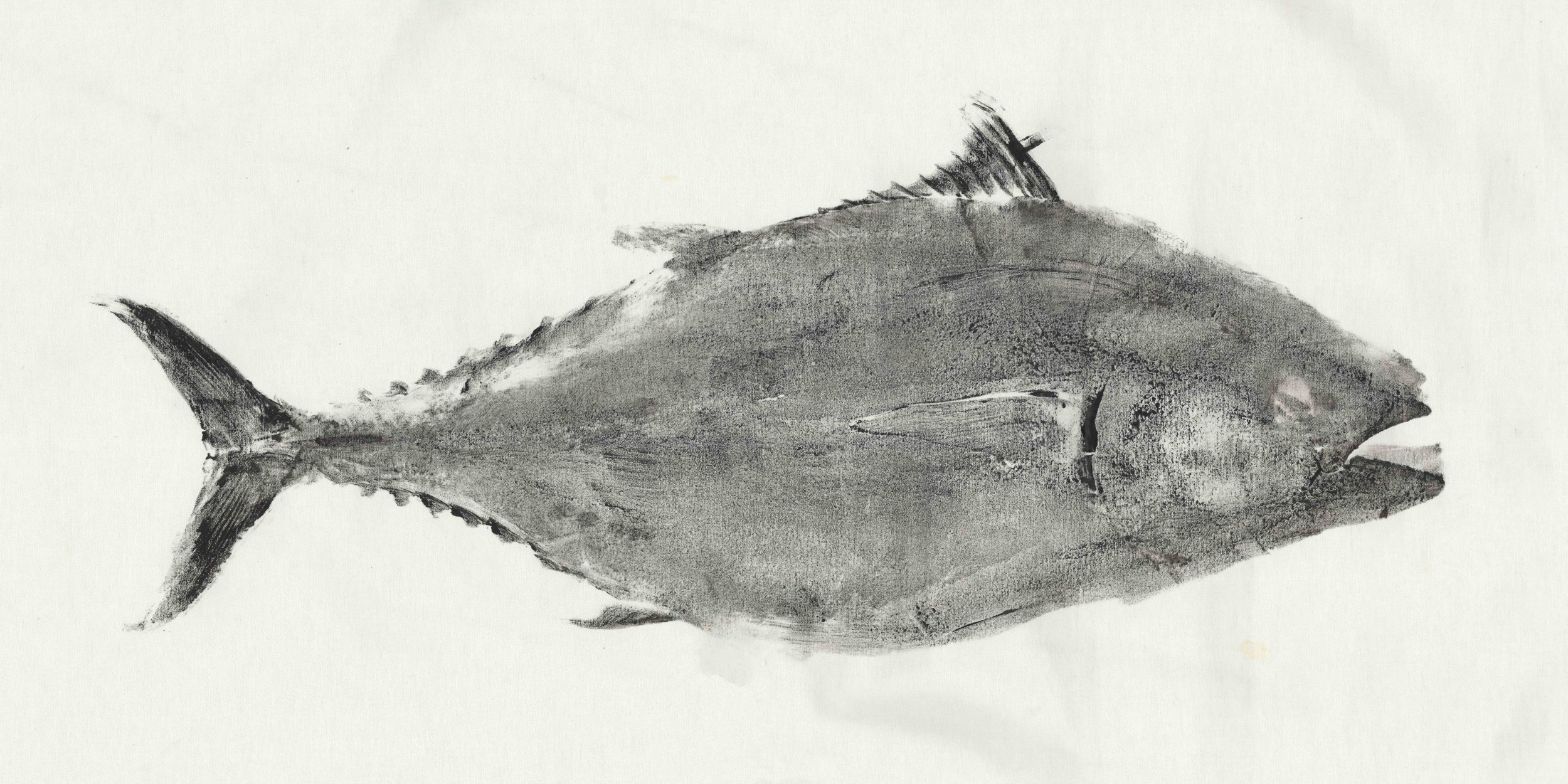
GYOTAKU FISH PRINTS
Printed using squid ink on recycled cotton canvas.
Gyotaku (魚拓) is a traditional Japanese art form that involves making prints of fish. The term “gyotaku” translates to “fish rubbing” in Japanese, combining “gyo” (fish) and “taku” (rubbing or impression). It originated in the mid-19th century as a way for fishermen to document their catches, serving as a practical record and a form of art.
Non-toxic ink or paint is applied to the fish, either directly or using a brush. Traditionally, sumi ink (used in Japanese calligraphy) was used. A piece of paper or fabric is gently pressed onto the fish, capturing its detailed features like scales, fins, and shape. Gyotaku captures the intricate textures and patterns of fish with incredible accuracy.
It served as a way for fishermen to prove their catch size and species before photography became common.
Today, gyotaku is appreciated as a fine art, often displayed in galleries or used as an educational tool in marine biology.
